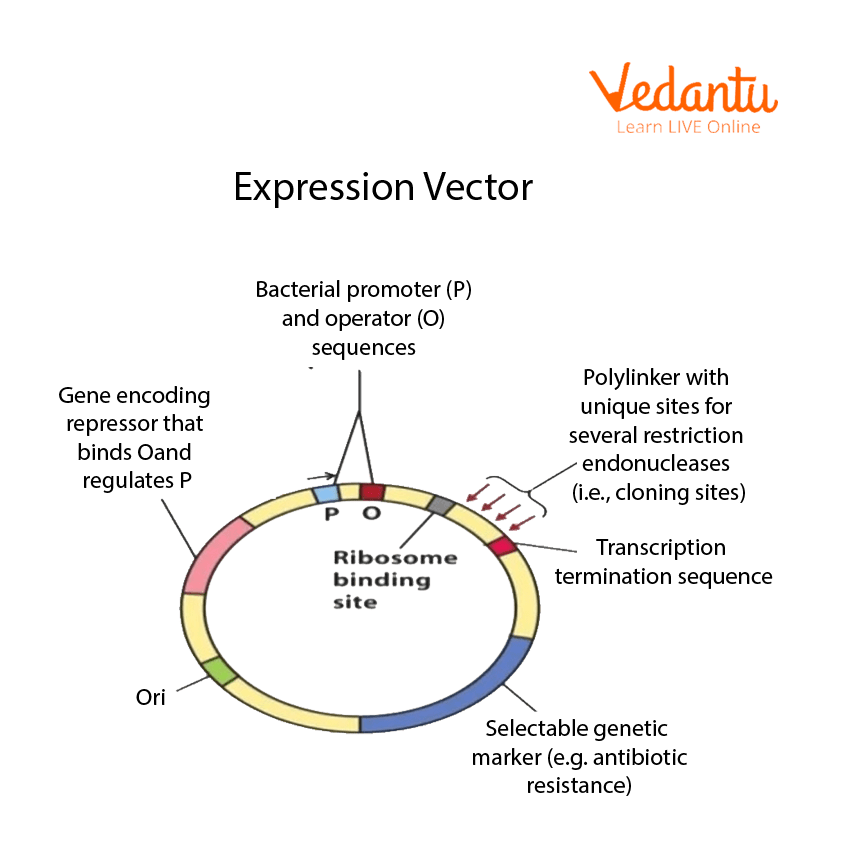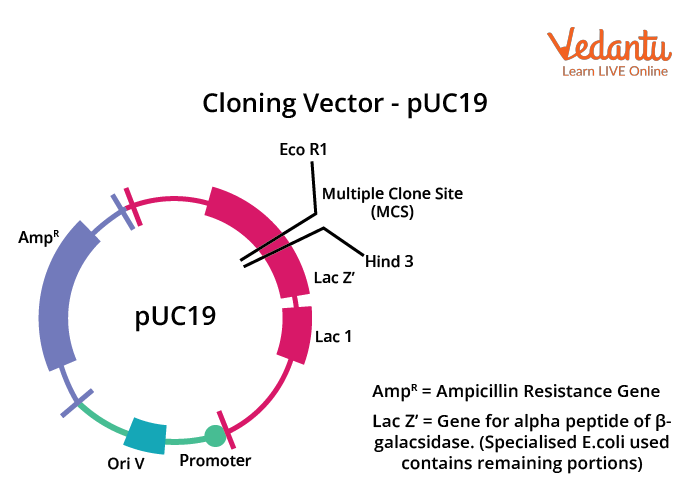An Introduction to Cloning Vector and Expression Vector
Molecular cloning and genetics studies require the use of vectors as a host or carrier system to transfer selected genetic components, namely DNA, to cells or organisms. Specialised host vectors are available for cloning and expression of a variety of genes from numerous species and of variable size fragments. Vector technology facilitates library construction, single gene analysis, protein expression, and basic molecular cloning.
The elected vector system is influenced by downstream applications, such as PCR, gene transfection, or gene transduction. Plasmids and viral vectors are two of the most common vector types used. The development of fluorescence protein marked vectors, like GFP (Green Fluorescent Protein), allows the detection of gene expression within live cells. Antibiotics resistance, localised expression, engineered selection markers, and cloning site size should be taken into consideration when choosing an appropriate vector.
What is an Expression Vector?
An expression vector, also called an expression to develop, is typically a plasmid or infection intended for quality expression in cells. The vector is utilised to bring a particular quality into an objective cell and can lay hold of the phone's instrument for protein blend to create the protein encoded by the quality. Expression vectors are the fundamental apparatuses in biotechnology for the development of proteins.
A bacterial expression vector for communicating green fluorescent protein from the T7 advertiser.
The vector is designed to contain administrative groupings that go about as enhancer and advertiser locales and lead to a proficient record of the quality carried on the expression vector. The objective of a very much planned expression vector is the effective creation of protein, and this might be accomplished by the development of a huge measure of stable courier RNA, which can then be converted into protein. The statement of a protein might be firmly controlled, and the protein is possibly created in a critical amount when essential using an inducer, in certain frameworks despite how the protein might be communicated constitutively. Escherichia coli is usually utilised as the host for protein creation, however other cell types may likewise be utilised. An illustration of the utilisation of expression vectors is the creation of insulin, which is utilised for clinical medicines for diabetes.

There are two classifications of expression vectors. Plasmids are round DNA atoms that are not difficult to work with because they can be engendered in bacterial cells. Viral vectors are infections designed to "taint" a host cell with quality of interest.
What is a Cloning Vector?
A cloning vector is a little piece of DNA that can be steadily kept up within a creature and into which an unfamiliar DNA part can be embedded for cloning purposes. The cloning vector might be DNA that was taken from an infection, the cell of a higher organic entity, or it could be the plasmid of a bacterium. The vector contains highlights that consider the helpful inclusion of a DNA section into the vector or its expulsion from the vector, for instance through the presence of limitation locales. The vector and the unfamiliar DNA might be treated with a limitation chemical that cuts the DNA, and DNA parts in this way created contain either unpolished closures or shades known as tacky finishes, and vector DNA and unfamiliar DNA with viable finishes can then be consolidated by subatomic ligation. After a DNA part has been cloned into a cloning vector, it could be further subcloned into one more vector intended for more unambiguous use.
Schematic portrayal of the pBR322 plasmid, one of the primary plasmids broadly utilised as a cloning vector.
There are many sorts of cloning vectors, yet the most regularly utilised ones are hereditarily designed plasmids. Cloning is for the most part previously performed utilising Escherichia coli, and cloning vectors in E. coli incorporate plasmids, bacteriophages (like phage λ), cosmids, and bacterial artificial chromosomes (BACs). Some DNA, notwithstanding, can't be steadily kept up within E. coli, for instance exceptionally huge DNA sections, and different organic entities, for example, the yeast might be utilised. Cloning vectors in yeast incorporate yeast counterfeit chromosomes (YACs).

Cloning Vector
Expression of Cloning Genes
Expression cloning is a procedure in DNA cloning that utilises expression vectors to produce a library of clones, with each clone communicating one protein. This expression library is then evaluated for the property of interest and clones of interest are recuperated for additional investigation. A model would utilise an expression library to segregate qualities that could present anti-toxin resistance.
Types of Cloning Vectors
There are the accompanying various kinds of cloning vectors:
Plasmids
These were the main vectors utilised in quality cloning.
These are tracked down in microscopic organisms, eukaryotes, and archaea.
These are regular, extrachromosomal, self-repeating DNA particles.
They have a high duplicate number and have antimicrobial safe qualities.
They encode proteins which are fundamental for their replication.
- pBR322, pUC18, and F-plasmid are a portion of the instances of plasmid vectors.
Bacteriophage
These are more effective than plasmids for cloning huge DNA embeds.
Phage λ and M13 phage are usually involved in bacteriophages in quality cloning.
53 kb DNA can be bundled in the bacteriophage.
- The screening of phage plaques is a lot more straightforward than the screening of recombinant bacterial settlements.
Phagemids
These are artificial vectors.
They are utilised in a mix with M13 phage.
They have numerous cloning destinations and an inducible lac quality advertiser.
They are recognized by blue-white screening.
Bacterial Artificial Chromosomes.
These are like E.coli plasmids vectors.
It is gotten from normally happening F' plasmid.
These are utilised to concentrate on hereditary issues.
- They can oblige huge DNA successions with practically no gamble.
Other Cloning Vectors Include:
Yeast Artificial Chromosomes
Cosmids
Retroviral Vectors
- Human Artificial Chromosomes
Difference Between Cloning Vector and Expression Vector
Interesting Facts
An expression vector consists of the origin of replication, a gene that confers antibiotic resistance to the bacterial host. It always contains DNA segments for the regulation of mRNA production. Yeast Artificial Chromosomes are the largest cloning vector.
Important Questions
1. Give a few applications of expression vectors.
The applications of Expression Vector are as follows:
Creation of Recombinant Proteins: Non-engineered drugs and medications frequently come from living organic entities. These items, usually peptides and catalysts, can at times be reaped and purged straightforwardly from an organic entity that has been hereditarily altered to deliver the protein.
Genentech-central Command: The development of recombinant insulin by Genentech in the last part of the 70s is much of the time viewed as the troublesome advancement that sent off the biotechnology upset. After fifty years, the accessibility of mature expression vectors makes it workable for beginner researchers to design yeast to create insulin for their utilisation.
2. What are the features of Cloning Vectors?
The cloning vectors possess the following features:
A cloning vector should possess an origin of replication so that it can self-replicate inside the host cell.
It should have a restriction site for the insertion of the target DNA.
It should have a selectable marker with an antibiotic resistance gene that facilitates screening of the recombinant organism.
It should be small in size so that it can easily integrate into the host cell.
It should be capable of inserting a large segment of DNA.
It should possess multiple cloning sites.
- It should be capable of working under the prokaryotic and eukaryotic systems.
Key Features
Expression vectors are utilised for exact control of the statement of a recombinant protein utilised in protein creation applications.
They can likewise be utilised in fundamental examination to explore the capability of the communicated protein.
A cloning vector is used to get various copies of the new DNA part (nature of interest).


FAQs on Cloning Vector and Expression Vector
1. How are expression vectors used for cloning?
Expression vectors are utilised for sub-atomic science procedures, for example, site-coordinated mutagenesis. Cloning vectors, which are the same as articulation vectors, include a similar course of bringing another quality into a plasmid; however, the plasmid is then added to microscopic organisms for replication purposes. As a rule, DNA vectors that are utilised in numerous sub-atomic science quality cloning tests need not bring about the declaration of a protein.
Expression vectors should have articulation signals like areas of strength, a solid end codon, a change of the distance between the advertiser and the cloned quality, and the inclusion.
2. What is not common between an expression vector and a cloning vector?
Cloning vector and articulation vector are two kinds of vectors, utilised in recombinant DNA innovation to convey unfamiliar DNA fragments into an objective cell. Both cloning and articulation vectors are self-replicating because of the presence of a beginning of replication. Cloning vectors can be either plasmids, cosmids, or bacteriophages. The fundamental distinction between a cloning vector and an articulation vector is that a cloning vector is utilised to convey unfamiliar DNA portions into a host cell, while an articulation vector is a kind of a cloning vector, which contains reasonable articulation signals with maximal quality articulation.
3. What are expression vectors used for?
Expression vectors are plasmids used to communicate a quality of interest in a cell. Choosing the right expression vector is vital to the progress of examination and biotechnology item advancement projects.
Expression vectors are utilised for exact control of the outflow of a recombinant protein utilised in protein creation applications. They can likewise be utilised in essential exploration to research the capability of the communicated protein. They make it conceivable to present the coding succession of the protein of interest into a cell where the quality can be communicated.










